By Rick Beard
For four breathlessly hot days in mid-July 1863, New York City became the northernmost battleground of the Civil War. Mobs marauded through Manhattan, looting and burning homes and public buildings, fighting police and soldiers, and beating and sometimes killing those who resisted. African Americans were singled out as particular targets. Never before or since had the public order of a major American city been so imperiled. Democracy lay bleeding in the streets.
The spark that ignited the rioting was the 1863 Conscription Act, but a combustible mixture of long-festering issues—slavery, abolitionism, social class, politics, ethnicity, race, labor, and capital—fueled the fire that threatened to consume the Union’s largest and most important city. In 1860, New York City was home to 805,658 souls, 53 percent of whom were native born. Of the nearly 400,000 people who had come from abroad, 53 percent were Irish. By the war’s outbreak, some 86 percent of the city’s laborers and 74 percent of its domestic servants hailed from Ireland. More than half the city’s blacksmiths, weavers, masons, bricklayers, plasterers, stonecutters, and polishers were also Irish-born. By comparison, New York’s free black community was miniscule. Numbering 12,000 men, women, and children, blacks represented less than two percent of the city’s population.
[text_ad]
In 1860, 58 percent of the population lived in 15 downtown wards that covered less than nine percent of Manhattan’s area. The slums in the 6th, 11th, 13th, and 14th wards on the Lower East Side housed 147,264 residents. Irish, German, and Jewish immigrants lived cheek by jowl with free blacks. They labored at the same menial jobs, drank at the same taverns, and mingled in the same streets and dance halls. Living in such close quarters bred resentment and hostility that could easily erupt in violence. Between 1834 and 1863, there were at least a dozen major civil disturbances, several of which featured Irish New Yorkers as protagonists and African Americans as victims.
The Conscription Act: Sparking the New York Draft Riots
The Conscription Act that would trigger the rioting in July 1863 was an act born of necessity. With 130 regiments scheduled to leave for home in May and June, the Union Army needed 300,000 new recruits, and leaders in Washington were worried that few of the initially optimistic volunteers would reenlist. The new bill called for all male citizens between the ages of 20 and 45 to be enrolled in two classes. The first included single men between the ages of 20 and 45 and married men between the ages of 20 and 35, while the second included married men between the ages of 35 and 45. The second class would only be called up after the first class had been exhausted.
The Provost Marshal’s office, headquartered in Washington, was charged with administering the draft. Acting on orders from Provost Marshal General James Fry, a veteran of First Bull Run and Shiloh, conscription agents began going door to door in each congressional district during May and June 1863 to register all draft-eligible men. As federal agents, the provost marshals had broad powers to arrest and pursue draft evaders. Recent immigrants who had declared their intention to become citizens had 60 days to leave the country or become eligible to be drafted. African Americans, because they were not legally citizens, were not subject to conscription.
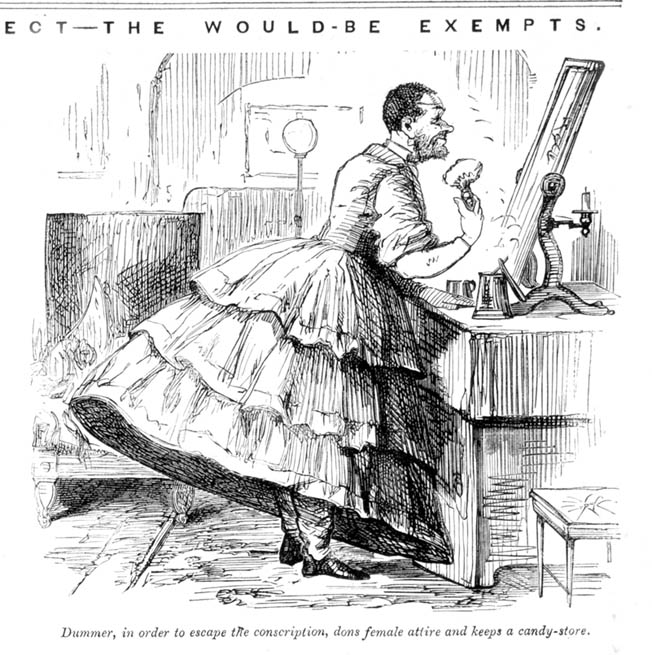
Those men who were mentally or physically disabled, or who were the sole support of aged or widowed parents or orphaned children, were exempt from service. The bill’s most controversial provision allowed a draftee to escape service by providing a substitute or paying a $300 commutation fee. At a time when a New York laborer might make no more than $6 a week, paying a $300 commutation fee represented a financial impossibility. Attempts by some Republicans to justify the fee as a means of allowing businessmen to stay home and run production efforts vital to the Northern war effort rang hollow to most. The draft represented a dramatic departure from the American tradition of voluntary military service. “This law,” editorialized Frank Leslie’s Illustrated Newspaper, “converts the Republic into one grand military dictatorship.”
“Our People Have Become Sick of Useless Butchery”
Many Democratic leaders believed the draft was a Republican ploy designed to undermine local political power by setting draft quotas that were far too high. New York was to provide 26,000 men, a number Governor Horatio Seymour said failed to give the state sufficient credit for its volunteers. A Democrat who supported the Union but nonetheless was critical of administration policies, Seymour believed the draft was unconstitutional. Determined to meet manpower quotas with volunteers, he had no intention of enforcing the draft.
Seymour was one of the many Democrats who spoke at the mass State Convention for Peace and Reunion at Cooper Union on June 3. The 30,000 in attendance that day heard the governor warn against Republican assaults on civil liberties. Other speakers praised former Ohio Congressman Clement Vallandigham, a leading Copperhead (Peace Democrat) who had been arrested a month earlier for providing aid and encouragement to “those in arms against the Government.” Abraham Lincoln, raged one speaker, had committed “damnable crimes against the liberty of the citizen.” Former New York City Mayor Fernando Wood, now a congressman, concluded the convention with a call for a cease-fire and negotiations for national reconciliation, a position quickly disavowed by the Democratic Party leadership.
Manton Marble, editor of the New York World, captured the mood of many New Yorkers. “Our people have become sick of useless butchery,” he wrote, “and dread strengthening a government that is strong only with the weak and unarmed, and nerveless on the battlefield, where alone it shows its power.” Enforcement of the draft, Marble warned, would be met with “manifestations of popular disaffection. It is impossible to tell what shape it will assume.” On July 4, Seymour gave a speech in which he asked, “Is it not revolution which you are thus creating when you say that our persons may be rightfully seized, our property confiscated, our homes entered?” His closing words would prove eerily prophetic. “Remember this,” he cautioned. “The bloody and treasonable and revolutionary doctrine of public necessity can be proclaimed by a mob as well as by a government.”
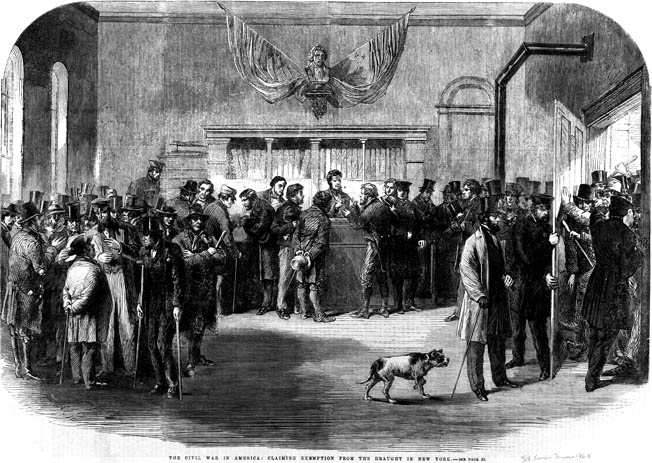
Ill-Prepared For Civil Unrest
New York was grievously ill prepared to respond to any large-scale civil disturbance. Twenty thousand state militiamen who might otherwise have been in the city were in Gettysburg, Pennsylvania, where Union forces led by Maj. Gen. George G. Meade were repulsing Robert E. Lee’s Confederate invasion. Maj. Gen. John Wool, a veteran of the War of 1812 and the Mexican War who now commanded the Department of the East, had a mere 550 men scattered in small garrisons at the city’s harbor forts and the navy yard, plus the Invalid Corps and the Provost Marshals. There were almost no military vessels in the harbor.
This state of affairs left the Metropolitan Police as the primary deterrent to any civil unrest. In a political struggle that led to a riot six years earlier, the Republican Party in New York City had wrested control of the police force from the Democrats. The well-founded suspicion that the Metropolitans were little more than an arm of the Republican political apparatus would make the police force a flashpoint for rioters in the coming unrest.
“Like Applying Fire to Gunpowder”
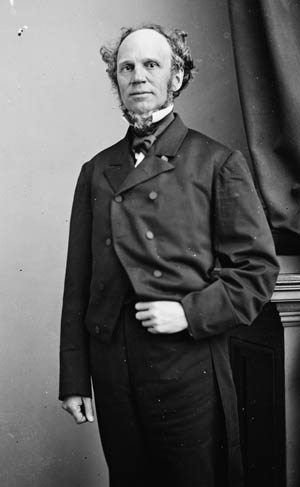
The provost marshal responsible for conscription in Manhattan decided to begin the draft during the second week of July. Colonel Robert Nugent was an Irishman who was well aware of the ill feelings many of his countrymen harbored toward conscription. To avoid trouble, he decided to avoid the more densely settled areas on the Lower East Side and hold the initial drawings in the 9th District, which was located above 40th Street on the more sparsely settled Upper East Side. By 4 pm on Saturday, July 11, draft officials had drawn 1,200 names from a cylindrical drum sarcastically dubbed the “wheel of misfortune” by onlookers. No one had sought to disrupt the process. William Jones, who lived at the corner of 46th Street and Tenth Avenue, was the first name called.
Nugent’s decision to begin the draft on a weekend proved to be a strategic blunder. On Sunday rumors spread that Copperheads were plotting to seize one of the city’s armories. The rumors proved to be false, but giving residents an extra day to drink whiskey and review a list of 1,200 names largely comprised of laboring men and poor mechanics unable to hire a substitute was, in the words of one journalist, “like applying fire to gunpowder.”
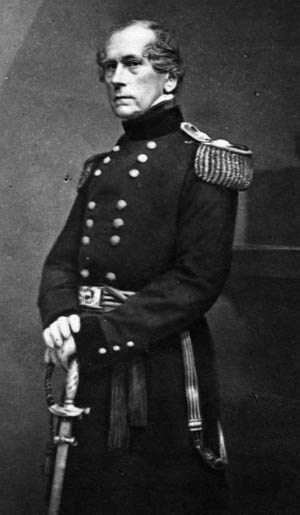
Around 4 am on Monday, men began streaming up Eighth and Ninth Avenues toward the southeast corner of Central Park at 59th Street. Irish workmen—stone masons, cellar diggers, boilermakers, and many more—joined Germans and other workers intent on stopping the draft. After lingering for a few hours to hear speeches and talk among themselves, the crowd began moving down Fifth and Sixth Avenues before turning east on 47th Street toward Third Avenue. There they were joined by a huge crowd, including many women, that had moved up the east side of Manhattan, recruiting workers from the many factories along their route. As James Jackson, owner of an iron works on East 28th Street, later recalled, “The leaders said they wanted the shop to close but that I might go to work the next day.” Their only aim, they told Jackson, “was to make a big show to resist the draft. They said they had no other motive than to have the men join them to put down the draft.”
By 10 am a crowd that a journalist at the scene estimated (surely inaccurately) to number 10,000 people had gathered in front of the 9th District provost marshal’s office on 47th Street and Third Avenue. Furious that they no longer enjoyed the volunteer fireman’s traditional exemption from militia service, Peter Masterson and his running mates from the Black Joke Engine Company Number 33 arrived on the scene and promptly began bombarding the office with rocks and paving stones. Amid cries of “Down with the rich men!” they succeeded in driving off draft officials, although not before a quick-thinking official was able to lock the draft records in a safe. The angry firemen then set the building ablaze, and before long the fire spread to adjacent houses. Appeals to put out the fires fell on deaf ears. Looting soon followed. The police and invalid soldiers commanded by Lieutenant Abel Reade were simply overwhelmed. When the soldiers got off one round that killed or wounded half a dozen rioters, the enraged mob clubbed two of the soldiers to death and threw a third off a ledge into the East River and dropped large boulders on him.
Thomas Acton Takes Command
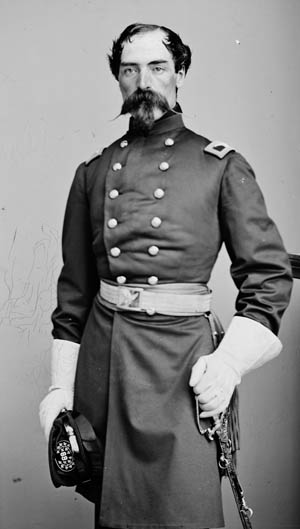
By 9 am the city’s police chief, 60-year-old John A. Kennedy, had ordered all police stations in Manhattan and Brooklyn to call in all their reserve officers. He then set off uptown to survey the situation for himself. Recognized by several of the rioters, Kennedy was savagely beaten and survived only because a friend was able to convince the mob that he was almost dead and then spirit him away in a wagon. James Crowley, superintendent of the police telegraph system, almost met a similar fate. When he was forced off a streetcar along Third Avenue, he began to gather up cut telegraph lines. Rioters were ready to attack him until he assured them that he was “only getting the wires out of your way, boys.”
With Kennedy out of action, control over the police in Manhattan fell to Thomas Acton, president of the police commission that had originally appointed the chief. Acton quickly discovered that of the 1,600 officers on the force half were deployed to protect Westchester, Brooklyn, and Staten Island. He had no more than 800 men to push back against the rioters. Acton was a noted social and political activist and strong supporter of Abraham Lincoln. In the words of one contemporary, he was someone who “did not believe in speechmaking to [the mob]. His addresses were to be locust clubs and grapeshot.”
Earlier that morning Kennedy had assigned 12 men to each of six conscription offices scheduled to conduct the draft that day. He and Mayor George Opdyke had adopted a preemptive strategy of dispatching small groups of police to uptown areas where working men and women were gathering. This did little but anger crowds already suspicious of the Metropolitans and in some instances led to more violence than might otherwise have occurred. Once he took charge, Acton immediately began ordering his officers back to the Mulberry Street headquarters so that he could dispatch them as needed to trouble spots. Communication was particularly challenging because the various police precincts could not communicate with one another by telegraph. Information had to flow first to headquarters before being shared.
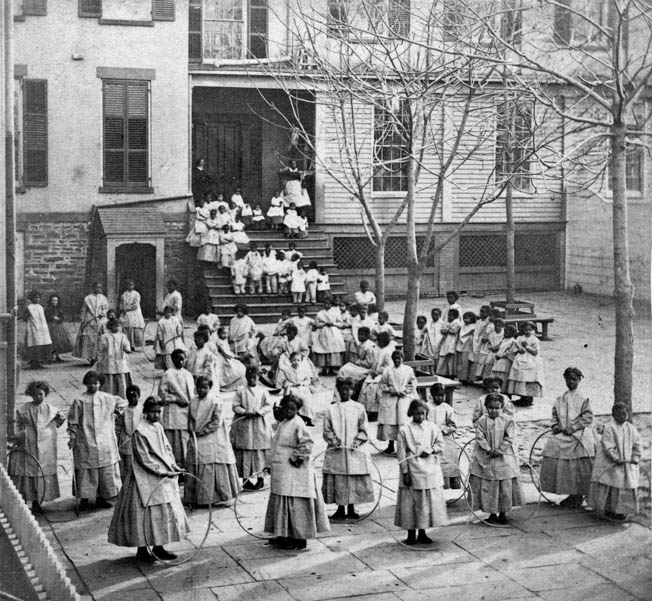
At 11:30 am, as Acton was taking charge, Provost Marshal Nugent ordered the six draft offices to close and transfer all their records to Governor’s Island for safe keeping. At a meeting with Maj. Gen. Charles Sandford, commander of the state militia, Opdyke told him that a riot now existed and ordered him to call out the military to “suppress it without delay.” This proved to be of little use. Confusion reigned among the various military officers charged with protecting the city. Sandford did little beyond guarding the armories, insisting that orders to do otherwise with the militia had to come from his commander, Governor Seymour. General Wool, who commanded the Federal troops, was 75 years old and infirm. As one officer observed, “General Wool seemed very much confused and worn out, and I should judge unable to perform any duty.” A lieutenant who asked Wool’s adjutant what was going on was told, “Good God, this is the one spot in New York where the least is known of what is taking place.”
Sandford’s Row With Harvey Brown
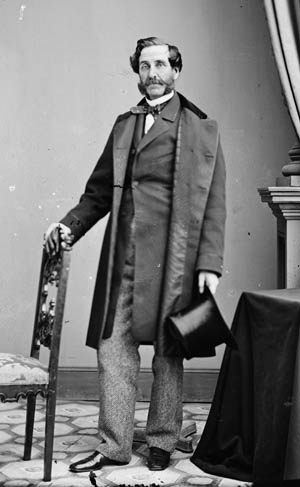
The only federal officer at all eager to engage with the rioters was Brig. Gen. Harvey Brown, who was in charge of the harbor forts. When ordered to send 80 men to the city, Brown instead ordered all the troops in the harbor forts to stay put while he determined what was happening. At a stormy meeting with Mayor Opdycke at the mayor’s temporary command center in the St. Nicholas Hotel at Broadway and Spring Street, Brown confronted Wool and demanded that he solicit additional troops from all military installations in the city. Although Wool disliked Brown, he put him in charge of all the federal troops in Manhattan and told him to report to Sandford. As soon as he realized that Sandford was not going to act, Brown established his headquarters at the Police Central Office and began cooperating with Acton.
Sandford’s complaint that Brown was insubordinate led to an angry confrontation with Wool during which Brown demanded to be given independent command of all federal troops. Wool dismissed him on the spot, and only the intercession of Opdyke was able to restore the one senior officer willing to do anything. Thereafter Brown simply ignored Sandford, whom he termed “a damned militiaman,” and acted unilaterally to meet the growing threat. Arguments over the command of federal troops on the first day were relatively meaningless because there were fewer than 500 troops available and Sandford insisted that most of them be deployed to protect the city’s armories. Although Opdyke chose not to ask Secretary of War Edwin Stanton to dispatch federal troops to New York, he did contact leaders in New Jersey, Connecticut, Massachusetts, and Rhode Island to seek aid. Little help was forthcoming.
“I’ll Go and I’ll Win This Fight”
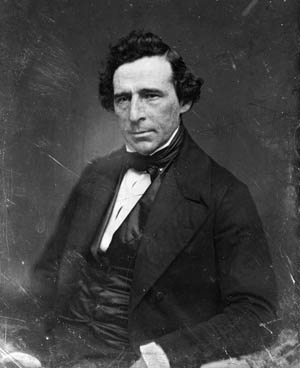
While waiting for assistance, Acton decided boldly to attack the rioters head-on. Inspector Daniel C. Carpenter, with a scraped-together company of 125 policemen, volunteered to lead the assault. “I’ll go, and I’ll win this fight, or Daniel Carpenter will never come back alive,” he vowed. Acton advised him vaguely to “make no arrests.” Carpenter’s first order of business was to stop the mob from destroying Mayor Opdyke’s home on Fifth Avenue. Rushing uptown in their paddy wagons, the policemen could hear the huge throng marching up Broadway, armed with clubs, pitchforks, iron bars, and pistols.
Carpenter sent two companies of officers up Fourth Street to storm the rioters from the rear. Then, aiming his locustwood club like a rifle, Carpenter ordered the rest of his men to attack. “Up, Guards! At them!” he cried. Racing forward, he confronted the apparent leader of the mob, a bearded man armed with a crowbar. The man swung his weapon at Carpenter but missed. The veteran policeman did not, bringing down his truncheon with full force on the rioter’s skull and killing him instantly. Meanwhile, the other policemen fell on the crowd from front and rear, swinging blood-soaked clubs into the confused mass of men and women. Many fell bleeding to the cobblestone streets; the rest fled.
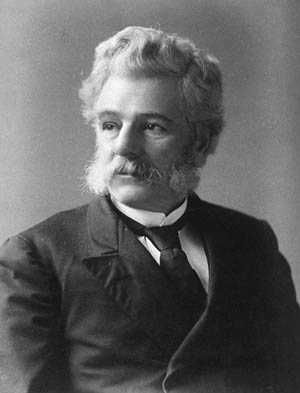
News of Carpenter’s victory and the draft’s temporary suspension led some of the original rioters to leave the streets and even, in some instances, to ally themselves with authorities to help quell the violence and protect property. Volunteer firemen were conspicuous examples of the sudden change of heart. A member of the Forrest Engine Company No. 3 argued that while the draft was “unnecessary and illegal, in the present exciting times we deem it our duty to protect the property of the citizens of the 11th Ward to the best of our abilities.”
Attacks on African Americans
During the afternoon hours, other rioters continued to attack targets throughout lower Manhattan. A mob attacked and burned Allerton’s Hotel at 43rd Street and Lexington Avenue, destroying the American Telegraph Company office in the process. In an attack on the armory at 21st Street and Second Avenue, rioters temporarily seized control of the building and began carrying off armaments. As police arrived to reclaim the building, the mob set it ablaze. Late in the afternoon, Acton and his police foiled an attack on their central headquarters.
On the city’s West Side, rioters burned the 8th District provost marshal’s office at West 29th Street and Broadway and began to target poor blacks. Around 4 pm the single most notorious event of the riots occurred when a mob attacked the Colored Orphan Asylum at 43rd Street and Fifth Avenue. The 237 young residents were able to escape, finding shelter in the 20th Precinct police station while the mob “clamored around the house like demons,” looting, destroying the interior, and burning the building to the ground. One man in the crowd who had dared to call out, “If there is a man among you with a heart within him, come and help these poor children!” was beaten senseless and nearly dismembered.
After the burning of the Orphan Asylum, rioters attacked other reform organizations such as the Magdalene Asylum at 88th Street and Fifth Avenue and the Five Points Mission. On the Lower East Side, rioters ransacked homes for colored sailors operated by William Powell and Albro Lyons. Each building served multiple purposes as family homes, boarding houses for sailors, and centers for black activism. Powell provided space for a labor union for black seamen; Lyon ran a stop on the Underground Railroad. In both cases the rioters threw stones into the buildings, went through the houses looting and destroying the furnishings, and forced the families to flee.
Members of the black elite were also singled out for attack. Henry Highland Garnet, a noted abolitionist, minister, and educator, was lucky. His daughter foiled a planned attack on their home on 30th Street by quickly removing the doorplate identifying the house as Garnet’s. James W.C. Pennington, also a leading abolitionist, was less fortunate. Returning from an out-of-town trip, he discovered rioters in his home and was barely able to escape capture. Other African Americans were even less fortunate. Around 6 pm on Monday evening, William Jones went out to buy a loaf of bread. Caught up in a mob’s pursuit of another black man, Jones was seized and hanged, after which his dead body was burned near St. John’s Church.
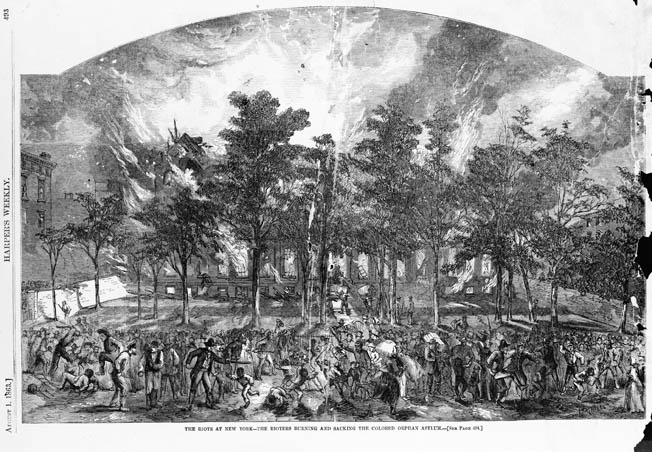
A Debate Over Martial Law
Assaults on African Americans as well as the hated Metropolitans and well-dressed men presumed to be Republicans continued throughout the afternoon and well into the evening. Shortly after dusk, Democratic and Republican civic leaders gathered at the St. Nicholas Hotel on Broadway to confer with Opdyke and Wool about what steps should be taken to stop the violence. Consensus proved impossible. Republicans, including several members of the Union League, demanded that the mayor immediately impose martial law and that Wool summon federal troops to enforce it. Although a Republican, Opdyke sided with the Democrats in resisting such an extreme measure. He did promise that he would reserve the military option if conditions did not improve in the coming days. Martial law, he later explained, “would have exasperated the rioters, increased their numbers, and those in sympathy with them. The probable result would have been the sacking and burning of the city, and the massacre of many [more] of its inhabitants.”
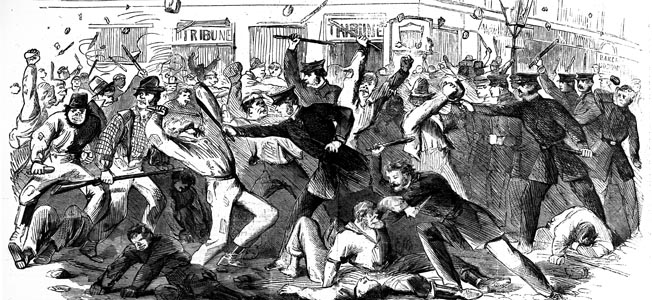
Displeased with the meeting’s outcome, several members of the Union League appealed directly to President Lincoln. A telegram drafted by prominent citizens George Templeton Strong, John Jay, Professor Wolcott Gibbs, and James Wadsworth read: “Our city having given her militia at your call is at the mercy of a mob which assembled this morning to resist the draft and are now spreading fire and outrage—several buildings in different wards are in flames and the Times and Tribune offices are at the moment threatened. New York looks to you for instant help in troops and an officer to command them and declare martial law. Telegraph wires cut in all directions.” Receiving no answer, they retired to a member’s home on Gramercy Park to wait out what promised to be a sleepless night.
Assault on the News Outlets
The four men’s report of the threat to the Times and Tribune offices in Printer’s Square east of City Hall was accurate. Throughout the afternoon and early evening, crowds had periodically gathered in front of the buildings to protest the newspapers’ support of Lincoln administration policies. Horace Greeley, longtime editor of the Tribune and a supporter of conscription, was a particular object of the mob’s scorn. Although Greeley insisted that the Tribune building not be fortified, his managing editor sent an associate to Governor’s Island to bring back weapons to repel any attacks. In the meantime, Tribune staffers used bales of printing paper to blockade entryways and windows.
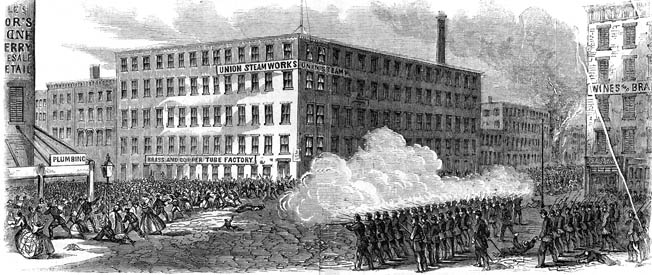
The leadership at the New York Times had none of Greeley’s qualms about fortifying their building. Henry Raymond, one of the paper’s co-founders, secured three Gatling guns from the army and set them up in windows. Not surprisingly, a mob led by a barber from the nearby Astor House Hotel, who had also been at the 9th District draft office that morning, elected to surround the less well-defended Tribune offices. In the words of one witness inside, the mob was “surging in black waves all around the building,” creating a vision of “total depravity, shouting, and hooting, and yelling.”
Alerted that an attack was planned for 11 pm, Tribune staff members began to unpack the crates brought from Governor’s Island only to discover that the ammunition did not fit the rifles. As zero hour approached, “a gang of about three hundred ruffians, mostly in red shirts, shouting and yelling like fiends” streamed from Broadway through City Hall Park toward the newspaper building. “They were clearly the fiery nucleus of the entire riot,” a witness recalled. The rioters made no secret of their chief target. “We’ll hang old Greeley to a sour apple tree,” they chanted. “We’ll hang old Greeley to a sour apple tree, and send him straight to hell!” Sidney Gay, Greeley’s managing editor, urged the elderly abolitionist to sneak out a back door. Refusing, the eccentric publisher marched out the front door of the newspaper and, unnoticed by rioters, walked calmly down the street to his favorite eating place.
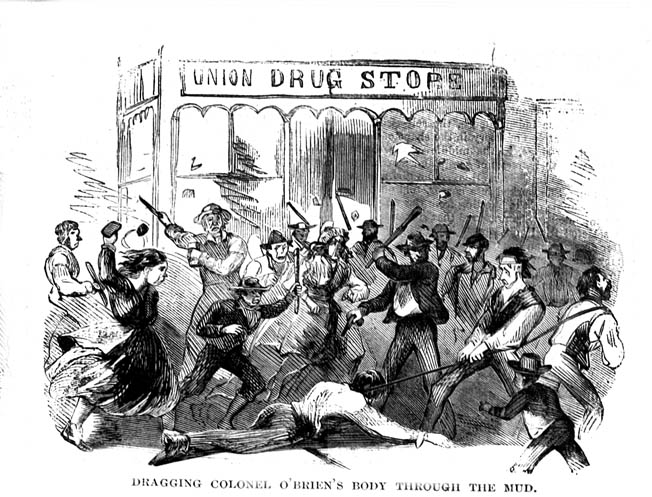
In any event, the rioters never reached the Tribune building. As the mob exited City Hall Park, a squad of 110 policemen, led by the indefatigable Carpenter, set upon the rioters with clubs. So fierce was the assault that one Tribune editor later remembered hearing “the tap, tap of the police clubs on the heads of the fugitives.” Within moments, “those of the three hundred who were not on the ground dead or helpless, were fleeing wildly in all directions.” The police then set about successfully dispersing the crowds that surrounded the building. The attempted attack on the Tribune building ended the day’s violence, and a heavy rainstorm that began shortly after 11 pm proved even more effective in driving the rioters from the streets. Throughout the rioting, the Tribune never missed an edition.
The Fate of Colonel O’Brien
Tuesday, July 14, dawned as hot and humid as the day before. By day’s end, the sheer scale of the violence—the loss of lives and property—dwarfed Monday’s depredations. One of the fiercest battles of the entire week broke out when a mob, hoping to seize several thousand carbines, attacked the Union Steam Works at 22nd Street at Second Avenue. The battle ebbed and flowed as the rioters first seized and were then ejected from the building by 200 policemen led by Inspector George W. Dilks. Women were in the midst of the fighting, hurling bricks and stones at the police and fiercely swearing all the while. One reporter observed, “The women manifested more pluck and courage than the men, resolutely standing their ground when ordered to disperse by the officers.” The police were able to remove many of the weapons, but later in the day rioters returned and set the building on fire.
While one contingent of police was fighting at 22nd Street, another was sent to break up a mob burning buildings 12 blocks to the north. A troop of 150 soldiers and an artillery unit from the 11th New York Volunteers, sent to assist the police, successfully dispersed the crowd but further inflamed the rioters. Colonel H.T. O’Brien ordered the discharge of two cannons loaded with blanks and had his men fire live ammunition over the heads of the rioters. Bullets “whistled through the air in every direction, shattering shutters and doors,” said one witness. They also killed seven people, none of them involved in the rioting and two of them children watching from upstairs windows.
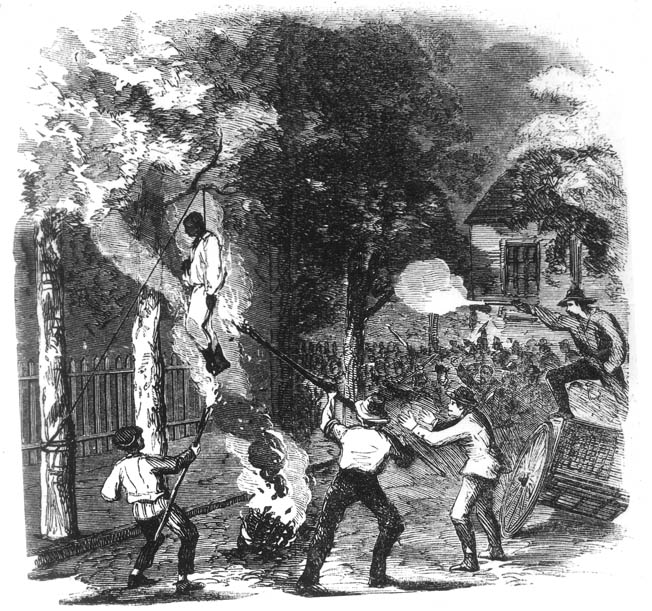
That afternoon O’Brien would pay a terrible price for his actions. He was recognized when he rather foolishly went to his neighborhood to see if his family was safe. When a woman threw a stone at him, he fired his pistol at her and wounded her in the knee. At that point a mob set upon him, beating him with bricks and clubs. For the next six hours rioters continued to assault him until he finally died “terribly mangled … his body almost naked and covered with gore.” During O’Brien’s agonizing ordeal, a druggist who tried to give him water was beaten and his store ransacked. A young girl who protested the violence was also beaten and the house where she boarded destroyed. O’Brien’s head was finally crushed with a paving stone.
Lynchings and Racial Attacks
Such ferocity characterized the rioters’ attacks throughout the second day of violence. The assault on African Americans was ongoing. William Williams, a seaman from the naval transport Belvidere, was attacked and beaten when he asked for directions to a grocery store. An Irish laborer who lived nearby threw stones at Williams before dropping a heavy flagstone on his chest and jumping up and down on it. Police later took Williams to the hospital, where he soon died of his wounds. Others proved more fortunate, fleeing their homes while the mobs were busy ransacking them. Mrs. Hester Scott later recounted a dramatic escape from her four-story house: “We tied the sheets together, attached them to the roof, and we got down on the sheets,” she noted. “One little girl, ten years of age, was let down; my husband lowered me and then my little girl; and then my husband came down.”
Individuals and families were not the only targets of racially motivated attacks. After rioters attacked a vessel from Nassau that had tied up near Fulton Ferry, the British consul general in New York successfully appealed to Admiral Reymond of the French frigate Guerriere to take black sailors from British ships on board. The French vessel took 200 English seamen on board. An additional 100 blacks from the West Indies took shelter in the British consulate building.
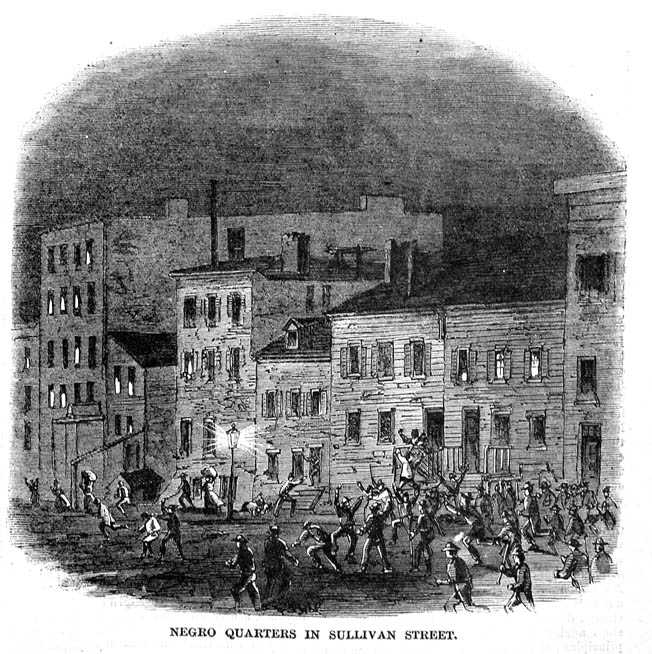
Manton Marble and the Incendiary Press
Blacks were hardly the only targets of violence. The composition of the mobs themselves had changed, as many who had protested the first day began to work with the authorities to end the rioting. Those who remained in the streets were in most cases not the economically marginalized or the criminal poor. Instead, they were wage earners eager to assert their political importance who had begun to connect the draft to a host of other social issues, all of them seemingly the result of Republican misrule. In the words of one historian, the riots “had revealed a popular opposition to Republican rule broad enough to astonish even the most optimistic Copperhead.”
This opposition found support from some of the city’s leading newspapers. On Tuesday morning, Manton Marble of The World warned that “any new attempt [to enforce the draft] will meet with still more serious opposition.” And he posed the following questions to the Lincoln administration: “Will the insensate men in Washington now at length listen to our voice? Will they now give ear to our warnings and adjutations? Will they now believe that Defiance of the Law in rulers breeds Defiance of the Law in people? Does the doctrine proclaimed from the Capitol that in war laws are silent please them [when] put in practice in the streets of New York?”
Editorial voices such as Marble’s helped fuel the rioters’ hostility toward those whom they considered leaders of the new political and industrial order. Many manufacturers armed their workers to resist anticipated attacks by the mob. Businesses and government agencies in the Wall Street area assembled a volunteer force of 1,200 men to protect the neighborhood. Meanwhile, federal authorities removed the deposits in the Sub-Treasury and the money from the Clearing House to Governor’s Island. Banks took similar precautions, shipping their bullion to the same destination. Workers at the Customs House fortified the building with bombs in the windows and sulfuric acid on the roof to be rained down on any rioters. The gunboat Tulip anchored off the Battery ready to engage any rioters.
Businesses failing to prepare for an assault might suffer the fate of Brooks Brothers, which was located a few blocks east of the Tribune building. Known as a hard employer, the firm had suffered through a tailors’ strike the previous March and had also been discovered supplying shoddy uniforms to the Union army. Around 9:30 pm that Saturday, the first stones pelted the windows and men began breaking down doors. Rioters smashed cases and ransacked the store, carrying various items of clothing, hats, and bolts of fabric into the street. The arrival of 150 police officers eventually broke up the crowds, but not before the store had suffered damages totaling $50,000.
Several hours before the destruction of Brooks Brothers, Governor Seymour finally declared the city to be in a state of insurrection and invoked a state statute that made the restoration of order a state rather than a federal responsibility. Seymour had been out of New York until early Tuesday morning. Upon his arrival, he immediately thrust himself into the middle of the decision making and began working to help Democrats regain control of the city and conciliate the rioters.
A Call For Peace
Late in the morning the governor gave an impromptu speech at City Hall before a crowd that surely included a number of rioters. He began by addressing the crowd as “My Friends,” a greeting for which he would be roundly castigated by Republicans. He reported that he had sent the state’s adjutant general to Washington to try to have the draft suspended. He went on to promise, in the words of a reporter from The World, that if the conscription law was upheld, “then the State and City authorities will combine for the purpose of equalizing the tax and making it bear proportionately upon the rich and the poor.” He closed with a plea for an end to the violence. “I wish you to take good care of all property and see that every person is safe,” recalled a Tribune reporter. “It is your duty to maintain the good order of the city, and I know you will do it.”
After his speech at City Hall, Seymour wrote to Archbishop John Hughes, asking him to exert his “powerful influence to stop the disorder, while assuring the Catholic prelate that he did not “wish to ask anything inconsistent with your sacred duties” while aiding the civil authorities. Hughes, known to some as “Dagger John” because he drew a small cross that resembled a stiletto after his signature, had first arrived in New York in 1841. Although he had initially supported the Lincoln administration, Hughes had broken with the president over the Emancipation Proclamation.
A day later the archbishop replied to Seymour indirectly, writing a letter to the New York Herald. After taking a swipe at Horace Greeley for his well-known antipathy toward the Irish, Hughes appealed to “all persons who love God and revere the holy Catholic religion to disconnect themselves from the seemingly deliberate intention to disturb the peace and social rights of the citizens of New York and to dissolve their bad associations with the reckless men who have little regard either for Divine or human laws.” It is unlikely that Hughes’ call for an end to the rioting had much immediate impact, but throughout the four days Catholic priests frequently put themselves in harm’s way, urging crowds to stop their rioting and spiriting victims of the mob’s wrath to safety.
After his City Hall speech, Seymour spent the remainder of the day conferring with Democratic leaders like Maj. Gen. George McClellan, a New York resident since Lincoln had relieved him of command the previous November. The governor used “Little Mac” and other party leaders as emissaries, sending them into heavily Democratic neighborhoods to try to quell the riots. Seymour had little direct interaction with those city officials directing the activities of the police force. He and Acton had a long-simmering political feud and refused to speak to one another, and Opdyke, a Republican, was suspected of intending to wrestle political control of the city from the Democrats.
Arrival of Federal Troops
About noon on Tuesday, Opdyke formally appealed to Edwin Stanton to send federal troops. The secretary of war immediately dispatched five regiments to the city from Pennsylvania and Maryland. For Republicans, the soldiers could not arrive soon enough, and many still held out hope that Opdyke would declare martial law. To some, the current state of affairs demanded such a drastic step. One businessman described the current state of affairs as “the beginning of a new era of violence, resistance to law, contempt of the government, and disregard of all public and private good.” Greeley’s Tribune chimed in that the insurrection was “not simply a riot but the commencement of a revolution, organized by sympathizers in the North with the Southern Rebellion.”
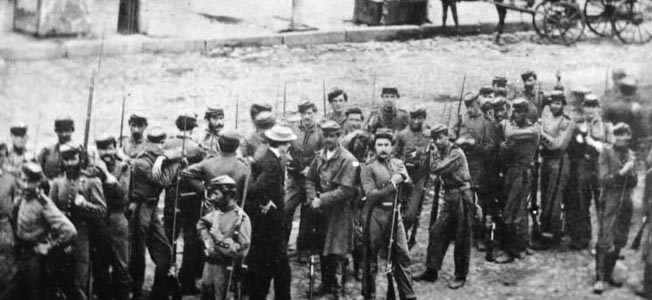
While the politicians argued, the rioters were using cut-down telegraph poles, carts, wagons, lumber, boxes, bricks, and rubbish to build barricades on both the east and west sides of Manhattan. The area between First Avenue and the river from 11th to 14th Street had long been a stronghold for the Irish Catholic working class, a zone free of a Republican presence. Those living in the neighborhood would remain the last holdouts against the restoration of public authority. On the island’s west side, mobs barricaded the area from 36th to 42nd Streets along Ninth Avenue. This represented a far greater threat than the East Side barricade, for it would allow the rioters to dominate much of the upper West Side from behind its walls. At 6 pm the police, reinforced by a company of federal troops, assaulted the barricade. The soldiers advanced, firing volley after volley, and drove the rioters back while policemen dismantled the wall. The scene repeated itself four times before the barrier was completely destroyed. A final volley from the troops routed the last of the resistance. By nightfall the neighborhood was calm.
The success of the assault on the West Side barricade and other instances in which the police and the military coordinated their efforts demonstrated a basic truth. A disciplined offensive allowed a relatively small number of well-armed men, moving together aggressively, to chase off a far larger mob. Although Tuesday had been a particularly bloody day, those in authority could take some comfort from the promised arrival of 4,000 federal troops the next day.
Heavy rains on Wednesday morning proved no deterrent to continued violence, and the day began as the previous one had—with the gruesome murder of a black man. Around 6 am a volunteer fireman chased James Costello, a black shoemaker, down West 32nd Street. Costello defended himself, shooting his pursuer in the head, but was soon overwhelmed by a mob of 200 to 300. Pulled into the middle of the street, Costello was beaten to death with fists and stones and was then hanged from a nearby tree. The mob sliced off his fingers and toes as souvenirs. Next, the rioters burned down a nearby row of black homes. Troops dispatched to respond to the attacks managed to disperse the mob with several volleys, killing at least 23 people and causing the women and children to fill the air “with their cries and lamentations.” Elsewhere, a mob dragged a black coachman named Abraham Franklin from his mother’s parlor, beat him with clubs and fists, and hanged him from a lamppost. Soldiers drove off the crowd and cut down Franklin but then left him on the street. The mob came back, hanged him again, and mutilated his body.
While lynchings and looting were continuing, the city’s Common Council met to consider a proposal to create a $2.5 million fund that would pay the $300 commutation fee for any New Yorker too poor to afford it. Viewed as a palliative for those opposing the draft, the fund was to be used only if the courts ruled the Conscription Act constitutional and would be funded by municipal bonds. “I was strongly urged by many leading citizens to give it my official sanction at once as a means of pacifying the rioters,” Opdyke recalled, but he refused to “bow to the dictation of the mob, and in effect nullify the draft.”
The Riots Winding Down
The uprising was entering a new phase, one in which smaller bands of rioters carried out sporadic surprise attacks at various points in the city. In response, Acton and Brown, who had been working closely together, divided the police force among four zones around the city: two on the Upper East Side, one around City Hall, and one on the northern tip of Manhattan. This allowed for more rapid responses to outbreaks of violence anywhere in the city. In the meantime, many wealthy New Yorkers fled with their belongings to Westchester or New Jersey.
Opdyke chose Wednesday afternoon to announce to the citizens of New York that “the riot which for two days has disgraced our City, has been in good measure subjected to the control of the public authorities. He went on to assure his constituents that “but for the temporary absence of all our organized local militia,” their peace would never have been disturbed. Opdyke then invited citizens to form voluntary patrols of their various districts.” He closed with the request that New Yorkers resume their accustomed daily routines.
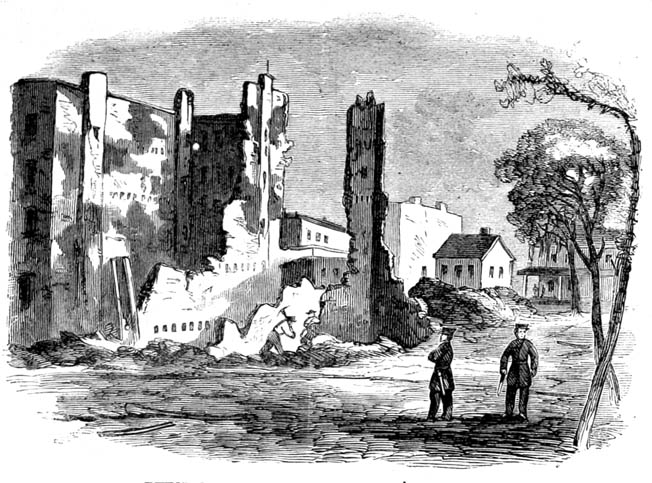
Opdyke’s reassurances were premature. Throughout the day rioters burned homes linked to Republicans up and down Sixth Avenue. Late in the afternoon Sandford, who had thus far restricted his troops to the protection of the armories, responded to reports that a threatening mob was gathering on First Avenue between 18th and 19th Streets. He dispatched 150 inexperienced volunteers, who soon found themselves trapped. Firing from rooftops and windows, rioters killed or wounded 10 soldiers. Brown was forced to send Regular Army troops and a howitzer to disperse the mob and rescue Sandford’s volunteers.
Around 11 pm, more than 200 former grain shovelers attacked the Atlantic Dock base in Brooklyn, where owners had hired strikebreakers the previous summer. There they set two grain elevators on fire, causing more than $100,000 in damage. This event, combined with the destruction earlier in the week of two street-sweeping machines owned by the city, were the week’s most blatant examples of workers pushing back against labor-saving devices that were costing them jobs.
“Receive Colored People As Long As You Can. Refuse Nobody.”
Throughout the evening the Union troops began arriving. The 74th Regiment of the New York State National Guard appeared at about 10 pm. Two hours later the 65th Regiment came on the scene, followed by the 152nd New York Volunteers and the 26th Michigan Volunteers. Around 4:30 am the 600 soldiers of the 7th Regiment, who had served the city so well in the past, marched up Broadway to form ranks in front of the St. Nicholas Hotel. William Stoddard, one of Abraham Lincoln’s secretaries who had been in New York throughout the week, wrote, “It was the beginning of the end, to the minds of many thousands who speedily heard of their arrival.” By Thursday morning more than 4,000 battle-hardened troops were in New York.
Despite the troops’ presence, large parts of the city remained vulnerable to mob violence. Rioters continued to target blacks, and Acton sent out a general order to all police precincts to “receive colored people as long as you can. Refuse nobody.” Militia troops engaged in a major battle for control of James Jackson’s foundry on First Avenue at 28th Street, and troops were positioned to protect other businesses involved in war production.
The Upper East Side between Third Avenue and the river from 21st to 40th Streets remained the least tranquil part of the city. Throughout Wednesday night and all day Thursday, the newly arrived troops used howitzers to overwhelm the remaining rioters. By Thursday evening the fighting was over and the 6,000 Union troops were in firm control of the city. Opdyke believed the arrival of the regiments on Thursday “removed all doubt as to our ability to promptly quell the riots and restore the supremacy of law.” Joseph Choate, at 31 already one of the city’s most prominent attorneys, agreed: “Law and order appear to be getting the upper hand again.” He went on to lament what was surely the riot’s greatest shame: “The cruelty which has for these three days been perpetrated on the blacks is without a parallel in history.”
The End of the Riots
On Friday, July 17, Opdyke issued a proclamation that reflected the state of affairs far more accurately than his statement two days earlier. “The riotous assemblages have been dispersed and the public authorities have the ability and the will to protect you,” he assured New Yorkers. “Business is running in its usual channels and few symptoms of disorder remain. The Police are everywhere alert.” While acknowledging that a small district in the eastern part of the city remained to be pacified, the mayor expressed confidence that he now had sufficient military to suppress any further rioting.
Opdyke’s optimism was well founded. By Friday the rioting was over, and the search for motives had begun. James Brooks, a Peace Democrat congressman and newspaper editor, published an account he titled “The Riot—Its History.” Sunday had been a day of leisure, he claimed, during which working men had pondered the draft. Monday saw the Conscription Riot, which included attacks upon the provost marshals and their places. Tuesday saw the Riot of Thieves, not only by native New Yorkers but also troublemakers from Philadelphia, Boston, and other quarters. Wednesday was a day of fighting between the military and the mob.
Brooks caught the change in the mob’s intent after the first day of rioting, but he was wrong about everything else. There is no evidence that “thieves” from other cities flocked to New York to take part in the rioting, and the military presence was not a decisive factor until Thursday. Unsurprisingly, Brooks also missed the one consistent element throughout the four days of violence—the brutal attacks on African Americans’ homes and lives.
The draft, the spark that had ignited four days of violence, resumed in August under the watchful eyes of federal troops. Dix had hoped to carry out the draft under the aegis of the state, but Seymour refused the general’s request for assistance. Instead, Stanton sent 10,000 infantry and three batteries of artillery from federal forces in Virginia. Few of the troops were of New York origin.
The first new names were drawn on August 19 in Greenwich Village, a Republican stronghold. Seymour and Samuel Tilden, a reform-minded Democrat and future presidential candidate, had convinced the administration to reduce New York’s quota from 26,000 to 12,000 men. Tammany Hall support and the improved fortunes of the Union Army contributed to the successful completion of the draft within the city.
The Cost of the New York Draft Riots
Opdyke’s dogged refusal to use public funds to ease the sting of the draft on male New Yorkers did not prevent the city from having to assume costs stemming from the riots. Estimates ran as high as $5 million for property destroyed by the rampaging mobs. New York law made municipalities, not the state, responsible for property destroyed in a “popular commotion,” and a committee of the New York County Board of Supervisors quickly set about reviewing claims for compensation. Eventually, the City Comptroller paid a total of $1,516,423.99 to claimants.
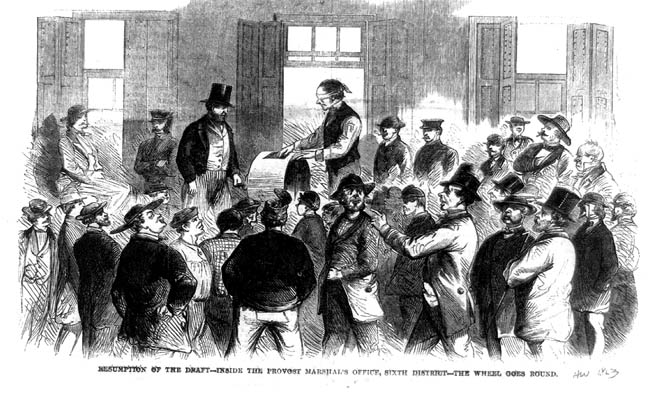
further violence.
The human costs were harder to calculate. There was no conclusive agreement on the number of people who had lost their lives, with the count ranging from a low of slightly more than 100 to a high approaching 1,500. No more than 119 deaths can be definitively accounted for. The relative anonymity of the large crowds, as well as understandable reluctance on the part of surviving family members to report the death of a loved one for fear of official reprisals, make a persuasive case for a much higher death toll. The ferocity of the fighting, particularly on Tuesday and Wednesday, would certainly suggest that many more than 105 people died.
What can be known with certainty is the price paid by the African American community. For black New Yorkers, the riots shattered any sense of stability. One quarter of the free black population—3,000 people—were left without homes. Twenty percent of the community simply left: by 1865, New York’s African American population had dropped from 12,414 in 1860 to 9,945. After the war, the organizers of the Colored Orphanage found themselves unwelcome when they attempted to rebuild in their old neighborhood, so they moved farther north to what would become Harlem.
Despite promises from Opdyke and Oakley Hall, the city’s district attorney, that they would deal harshly with rioters, few were ever brought to justice. Of the 443 people arrested as suspected rioters, 221 were released, 10 were discharged by the judge due to insufficient evidence, 13 were allowed to enlist in the Union Army, two were deserters who were returned to the military, and one escaped. Of those remaining, the grand jury refused to indict 36 cases, and the 74 cases that were indicted were never brought to trial. Eighty-one rioters came to trial: 14 were acquitted and 67 were convicted. The court sentenced 25 of those convicted to six months or less.
The draft riots in New York City represented a serious, if brief, threat to the Union. Although events during these four July days played out on a local level, their implications were national. Failure to enforce conscription would have starved the Union Army of much-needed soldiers and blunted its momentum. The larger question was whether Lincoln’s expanded administration could survive. The riot, one Union League member warned Edwin Stanton, was “the last great card of the rebellion.” That it had been played not by Confederates but by immigrant laborers and their Democratic patrons was a reminder of just how fragile popular support remained for the Union war effort in teeming, combustible New York City.
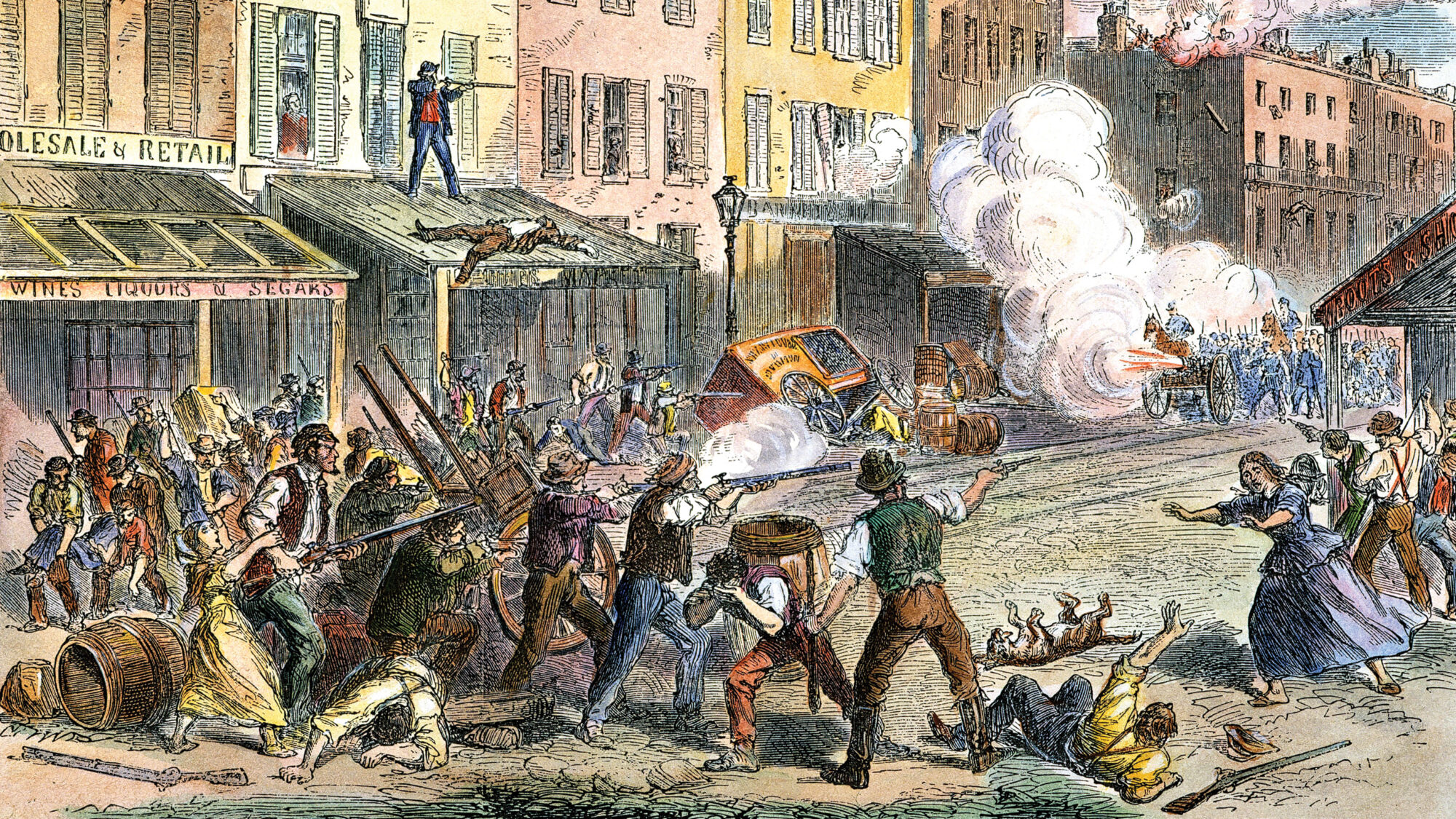
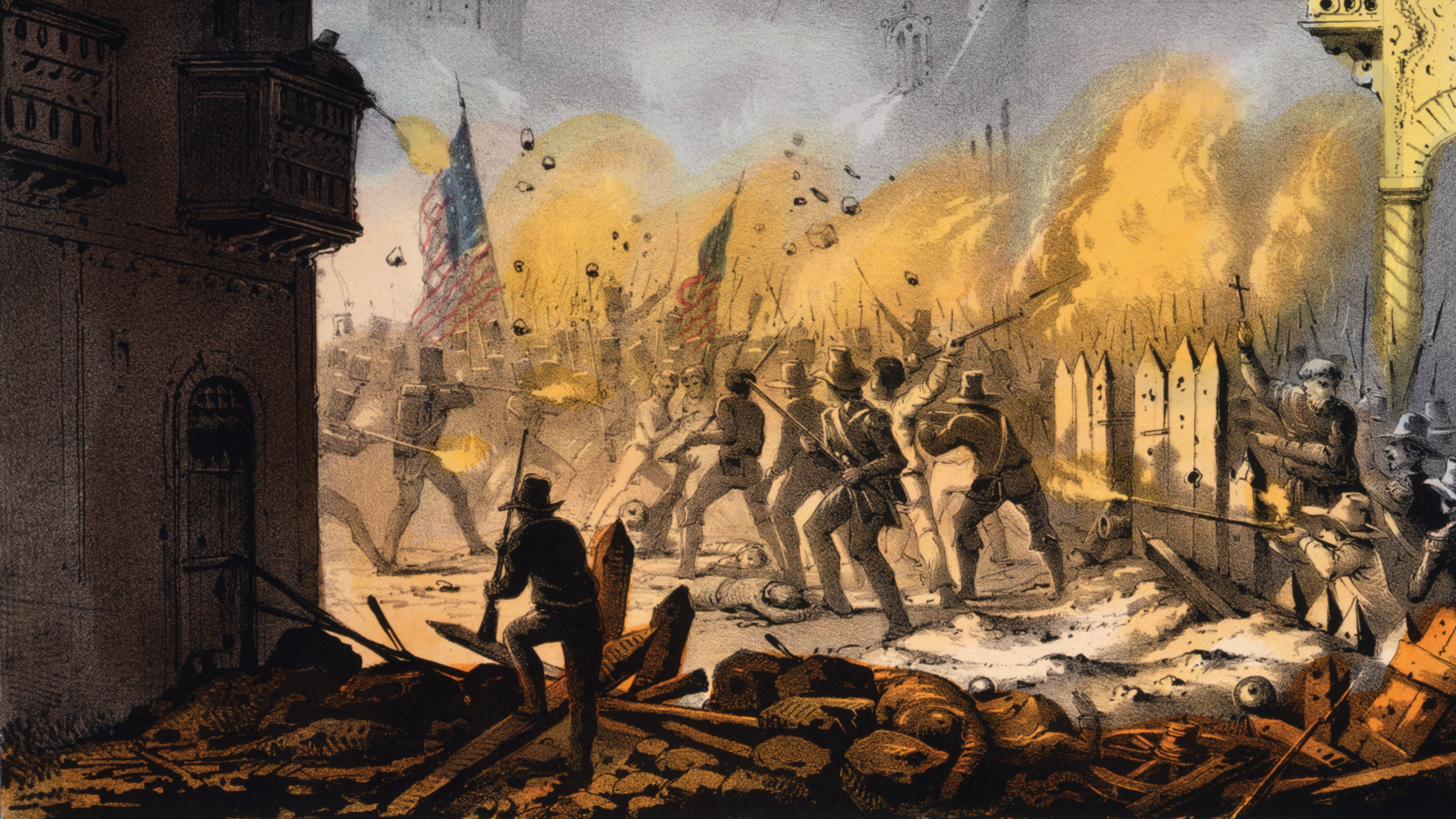
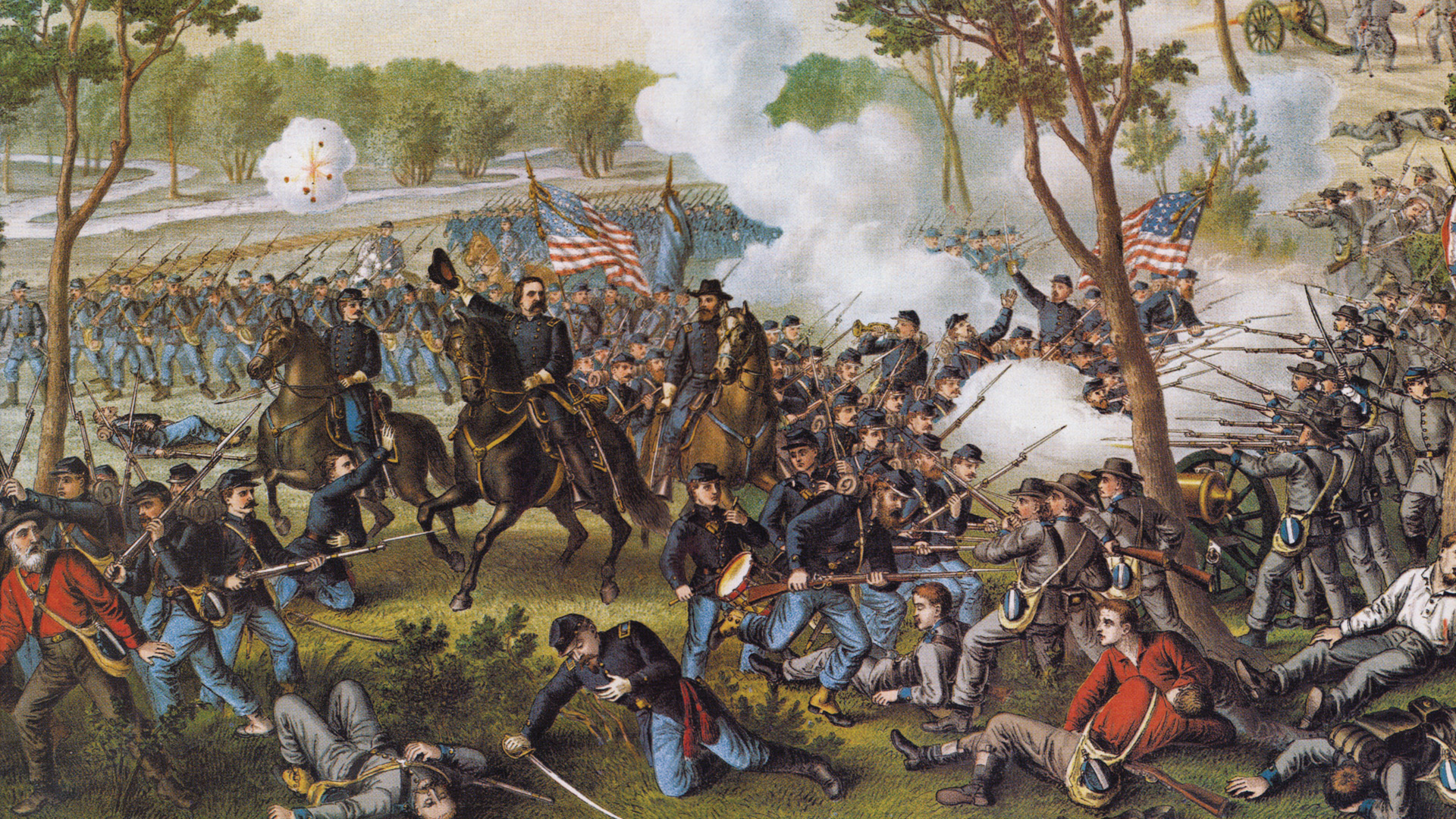
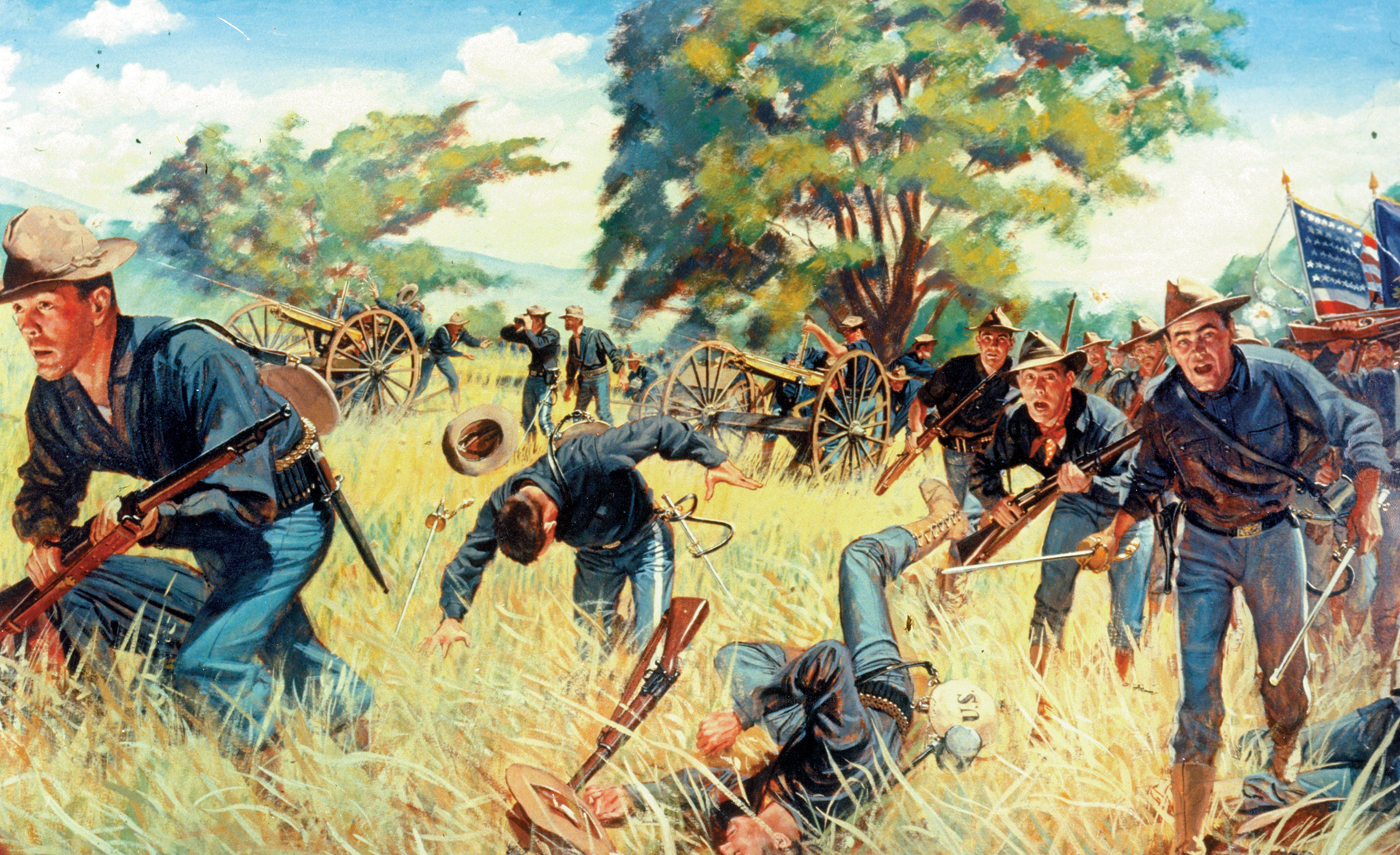
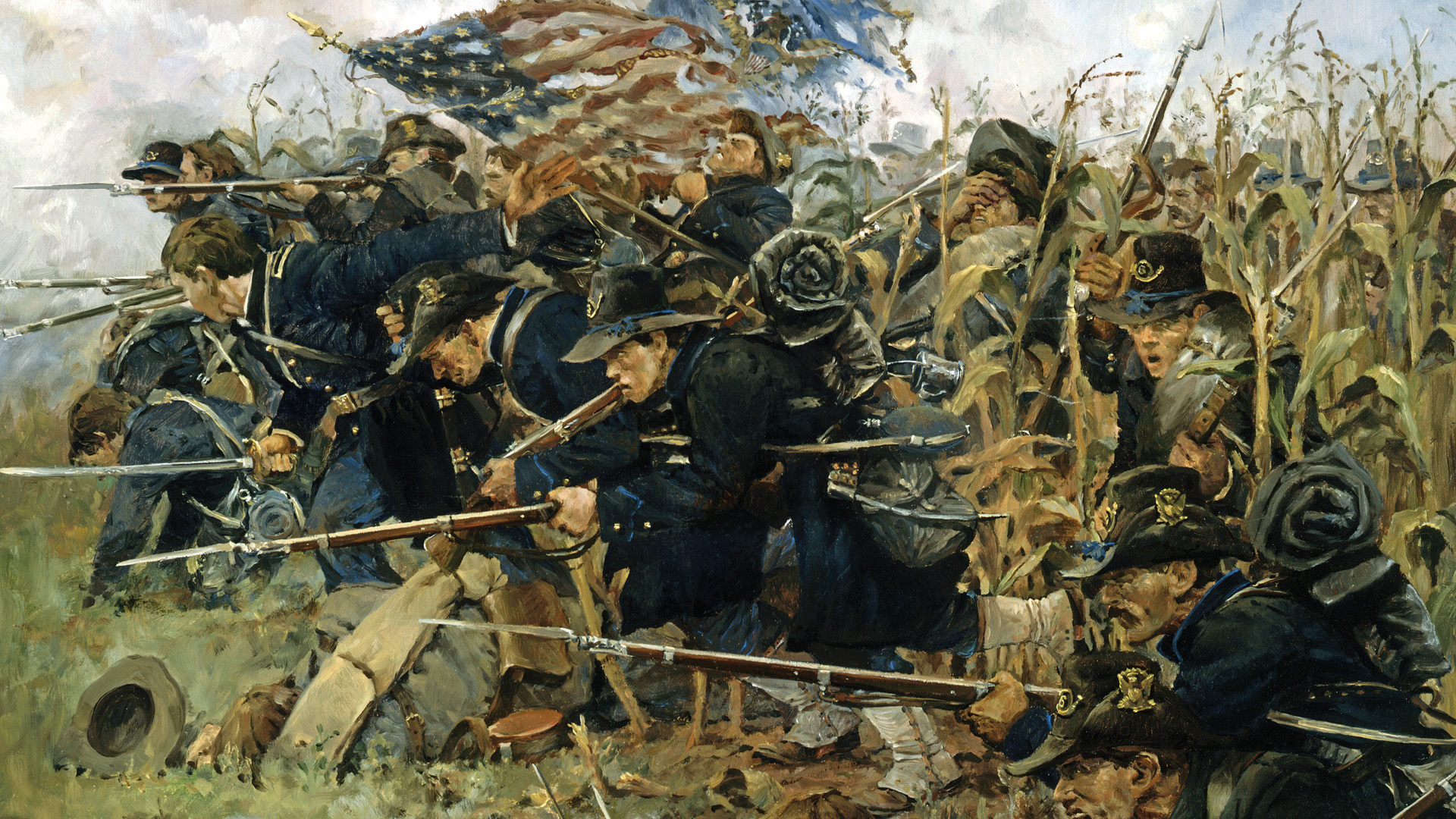
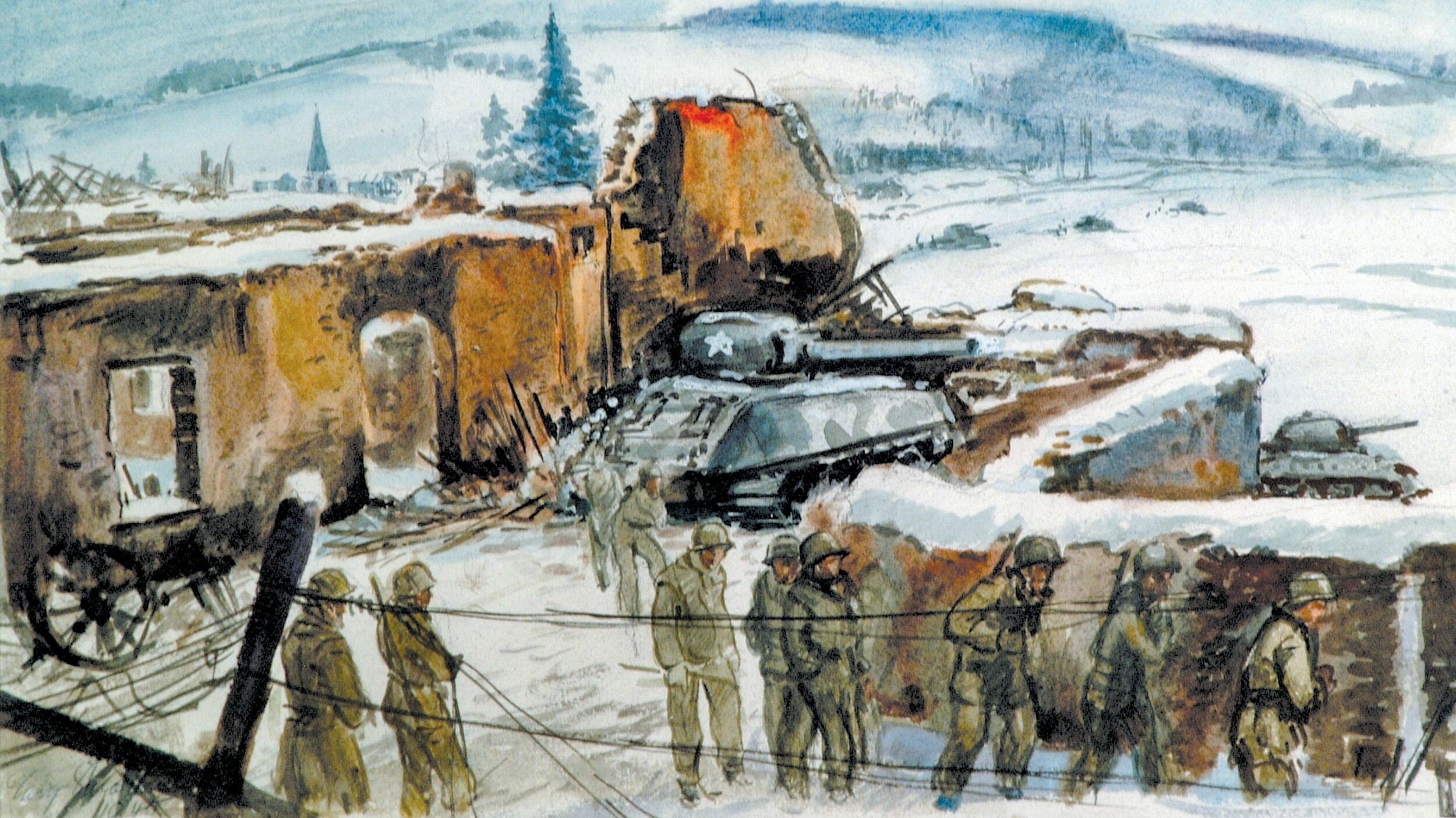
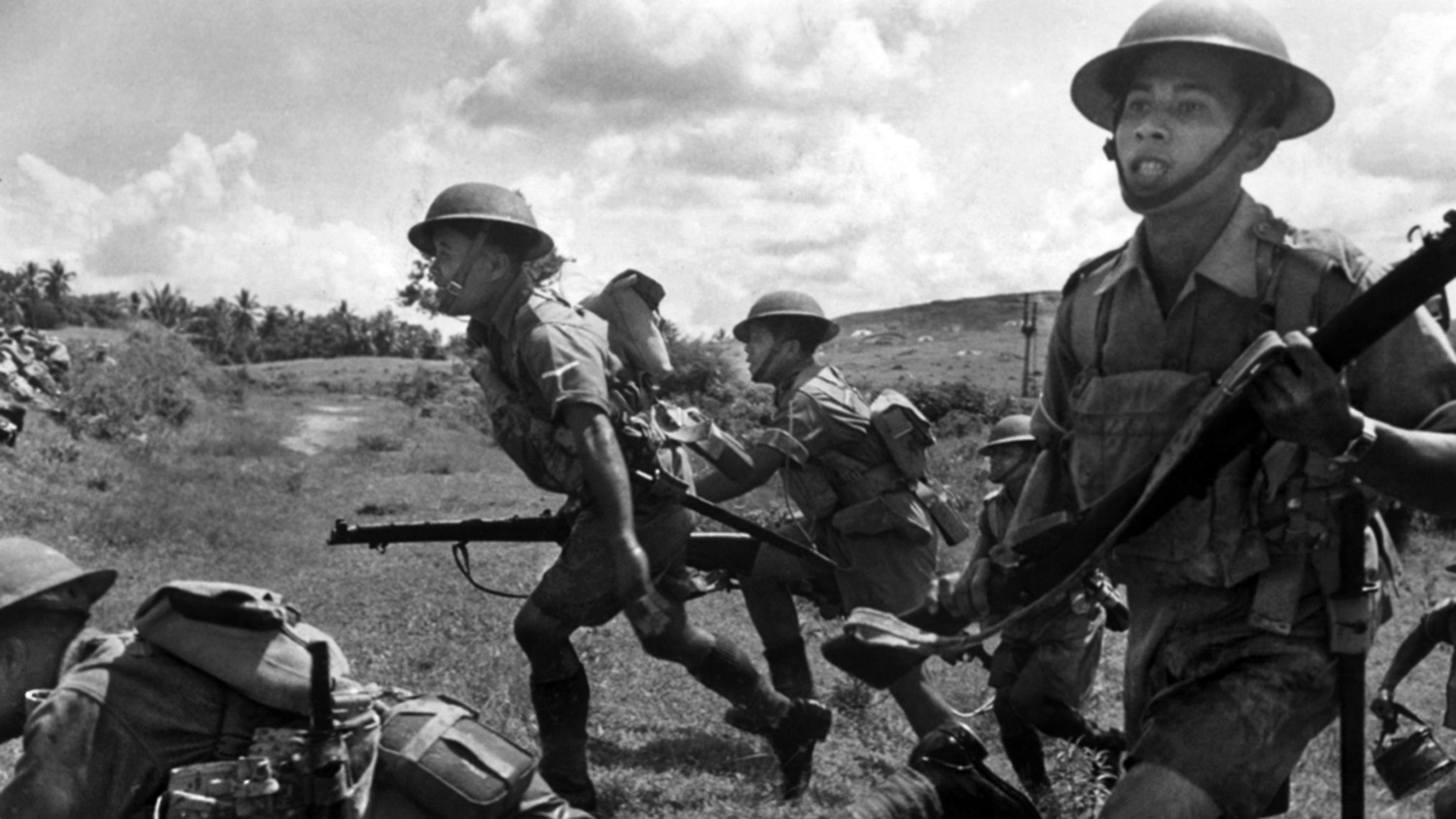
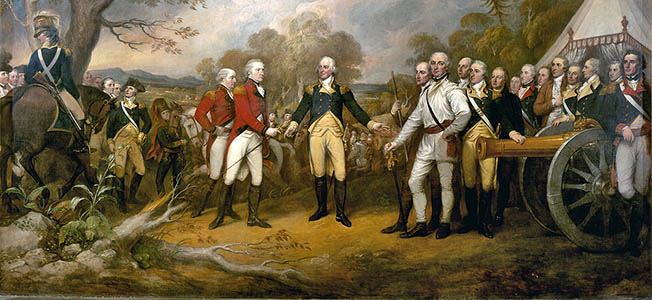
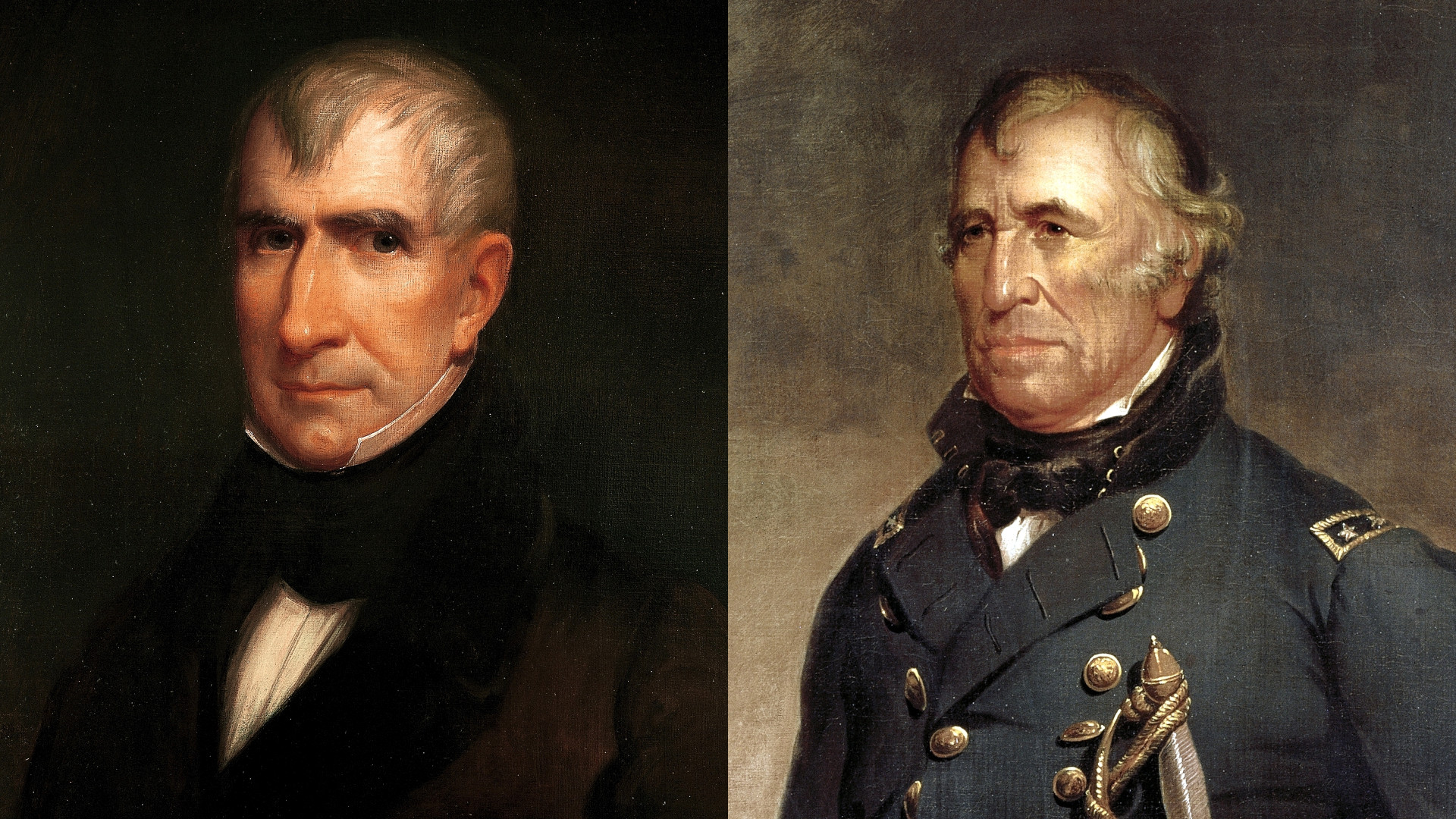
Interesting.
Hmmmmm………
I’m a subscriber to the newsletter, and clicked on a link to a story about a girl in Bund Deutscher Mädel, WWII, but it send me here……..???
Sorry. Click on the photo or the headline. That should get you to the story.